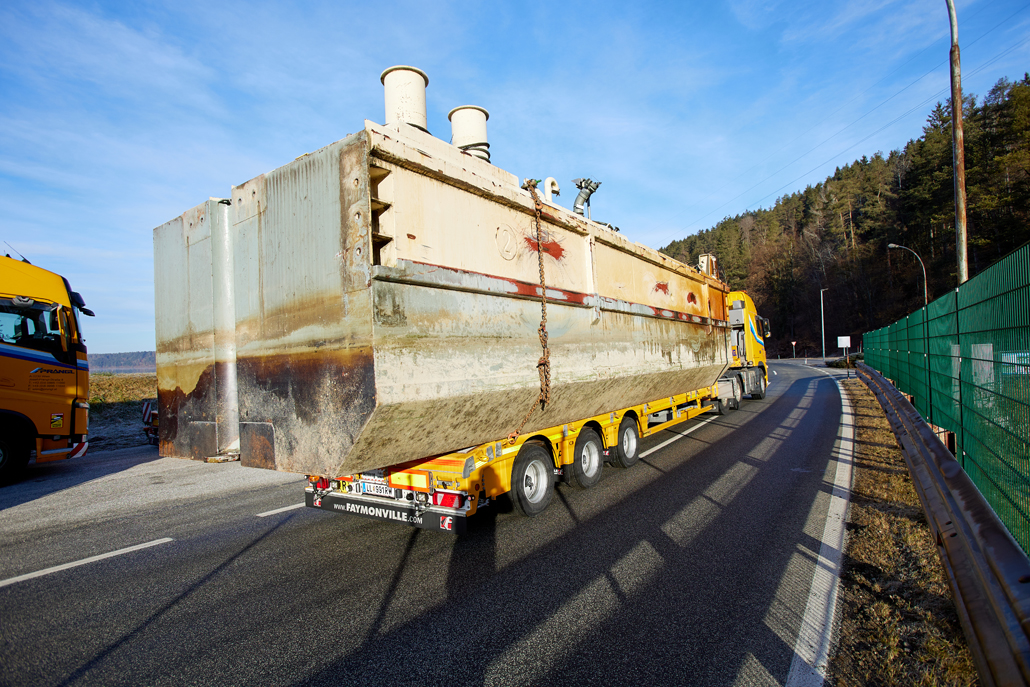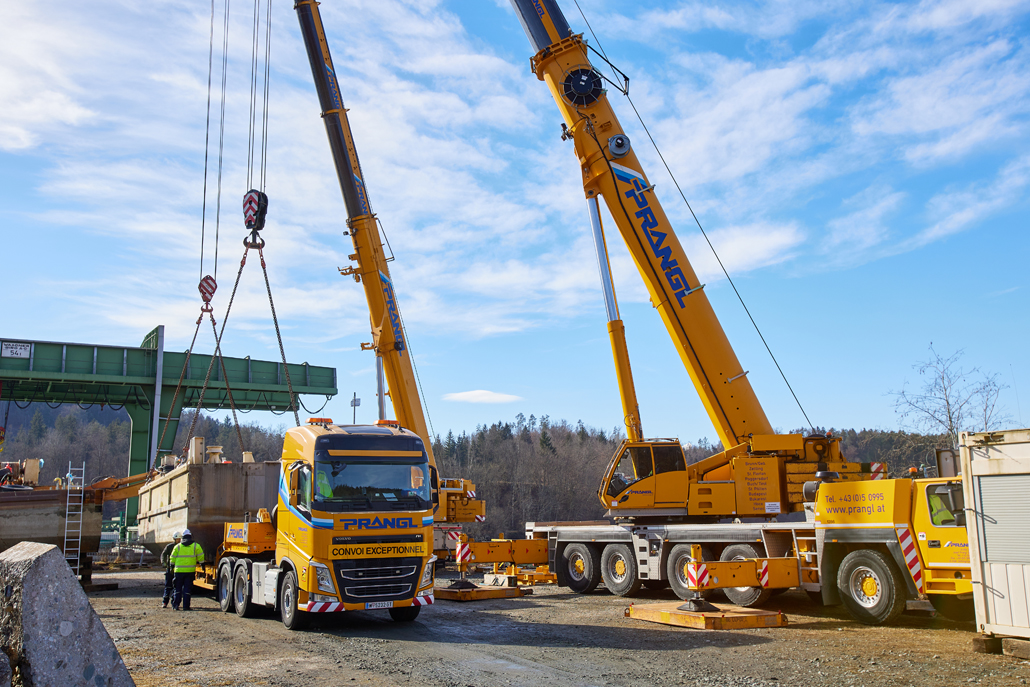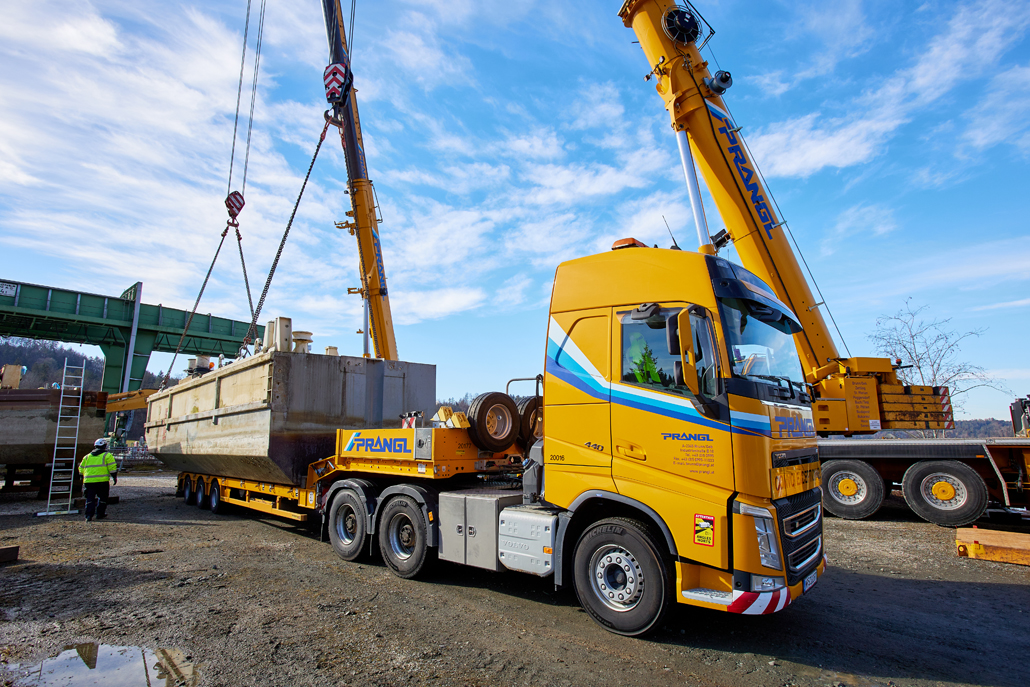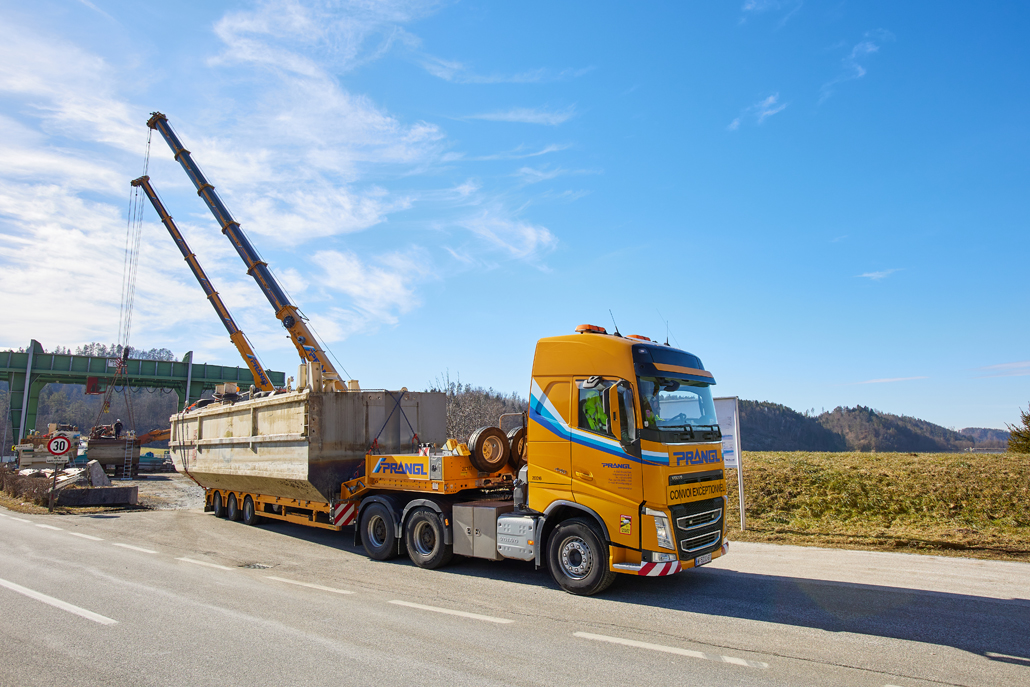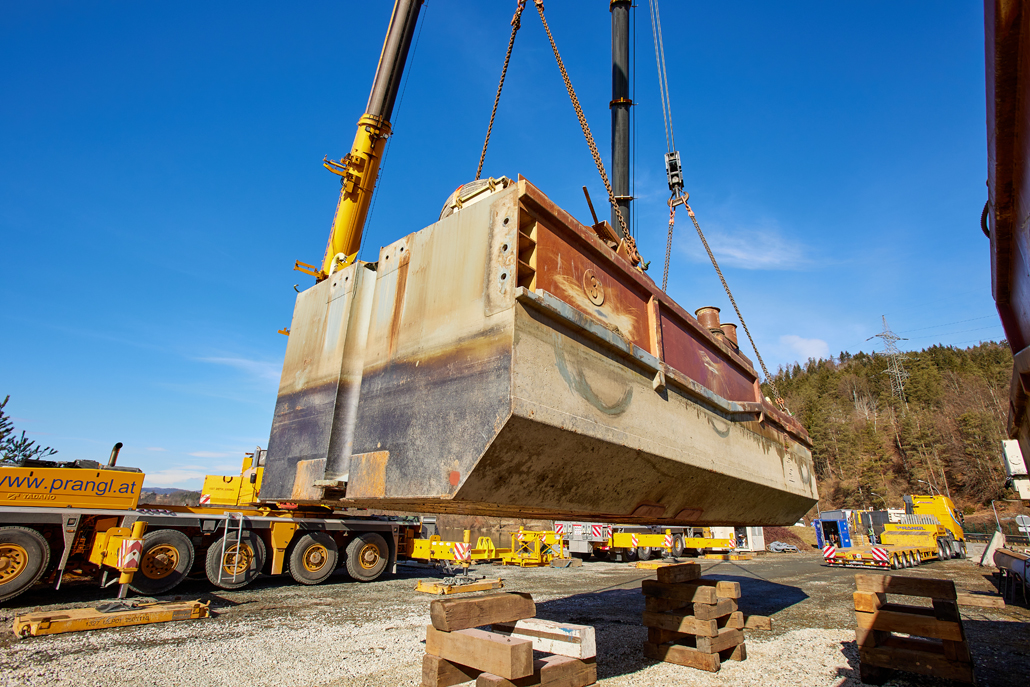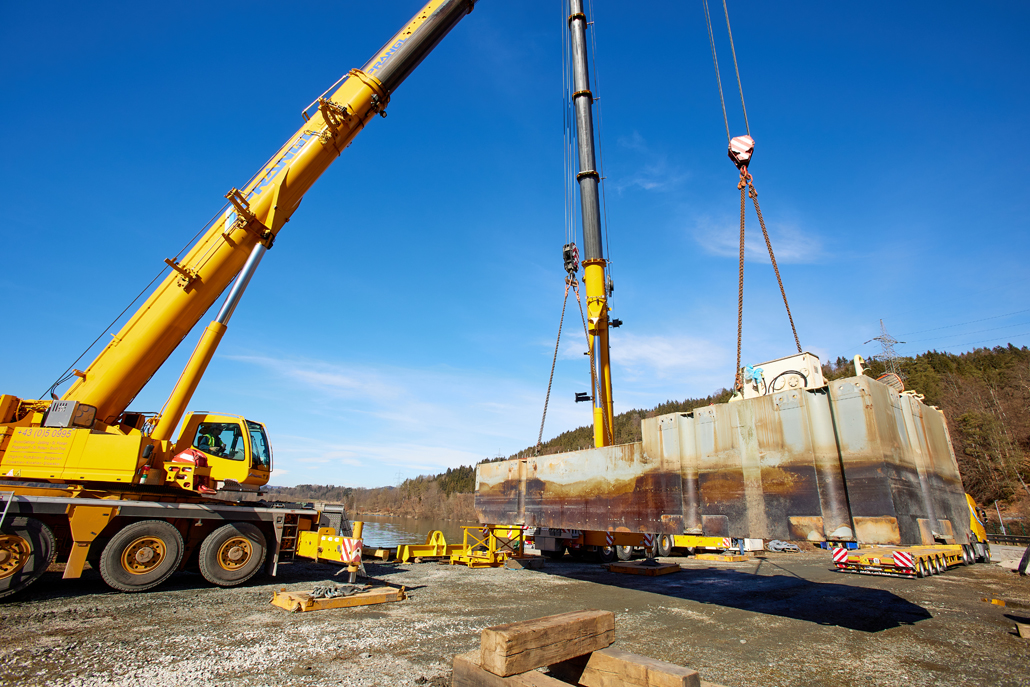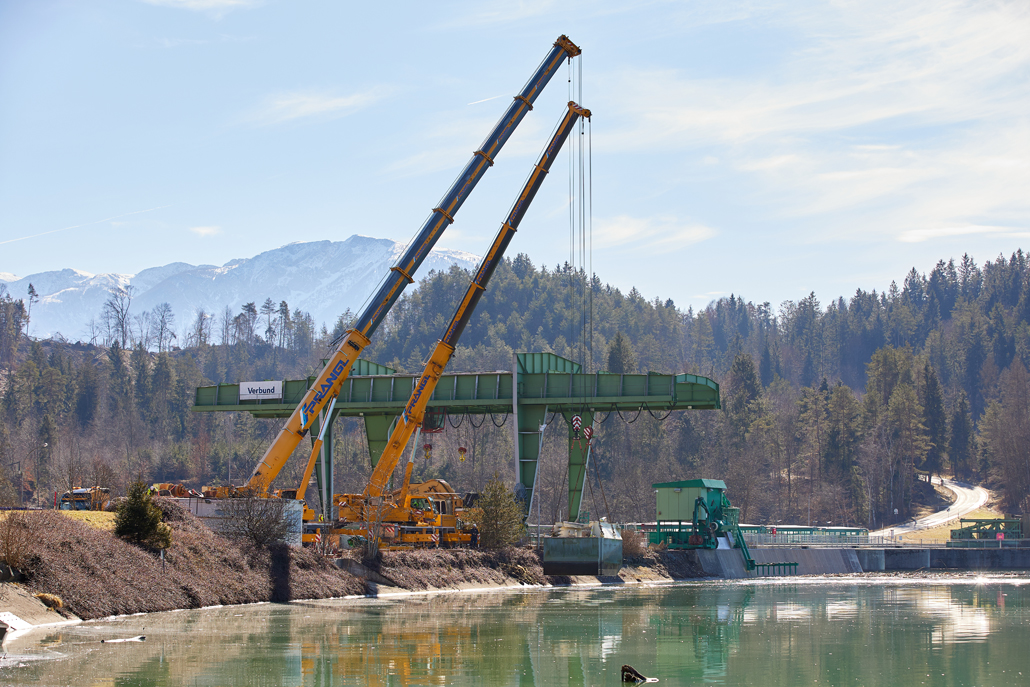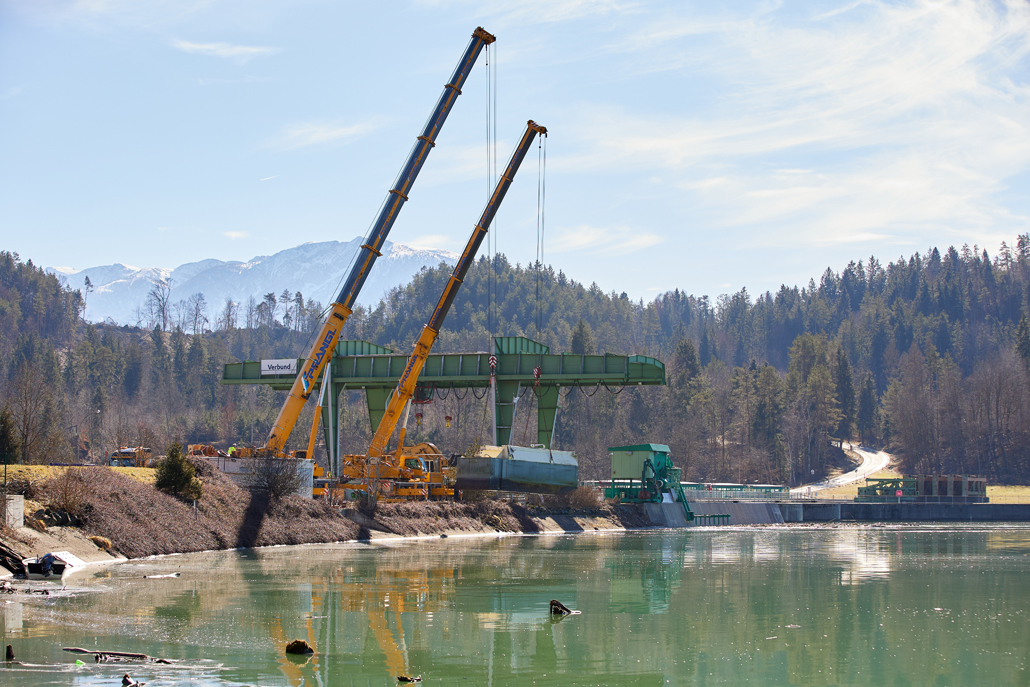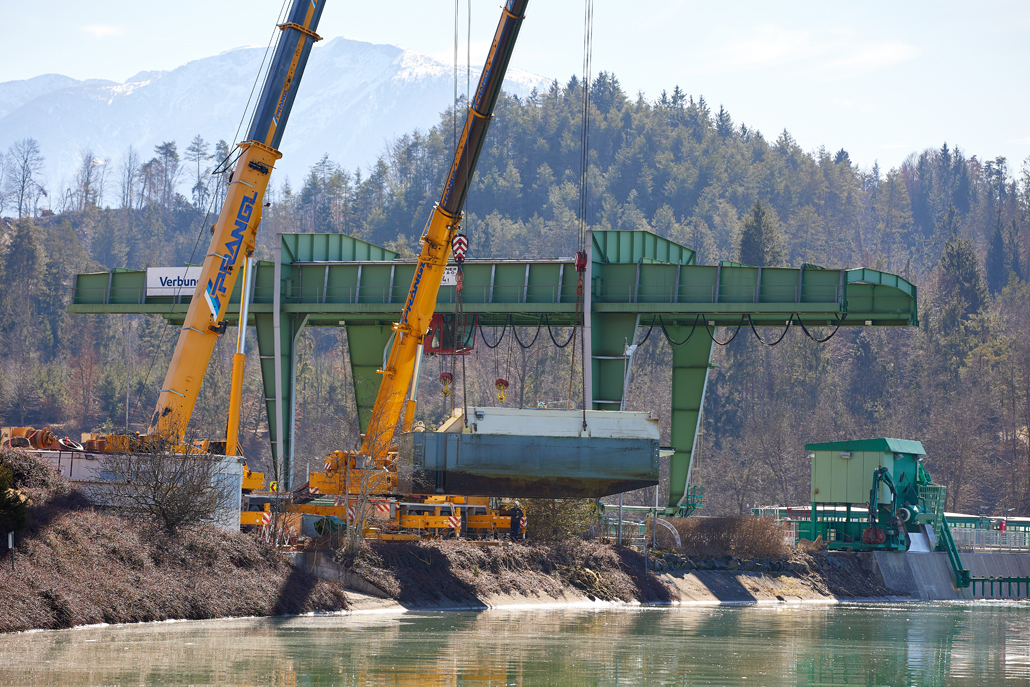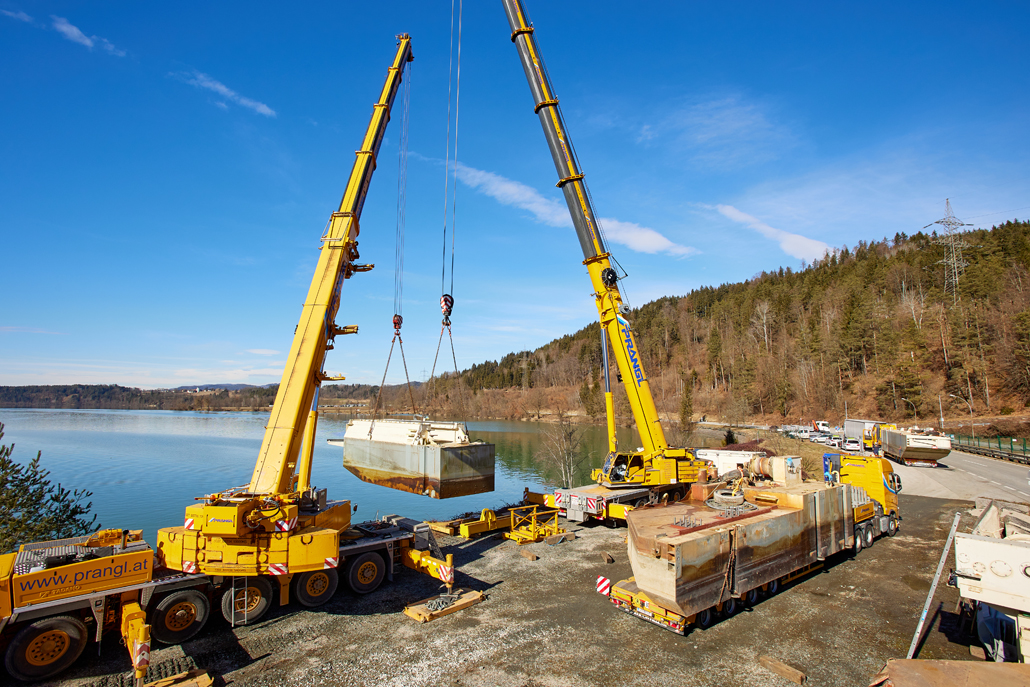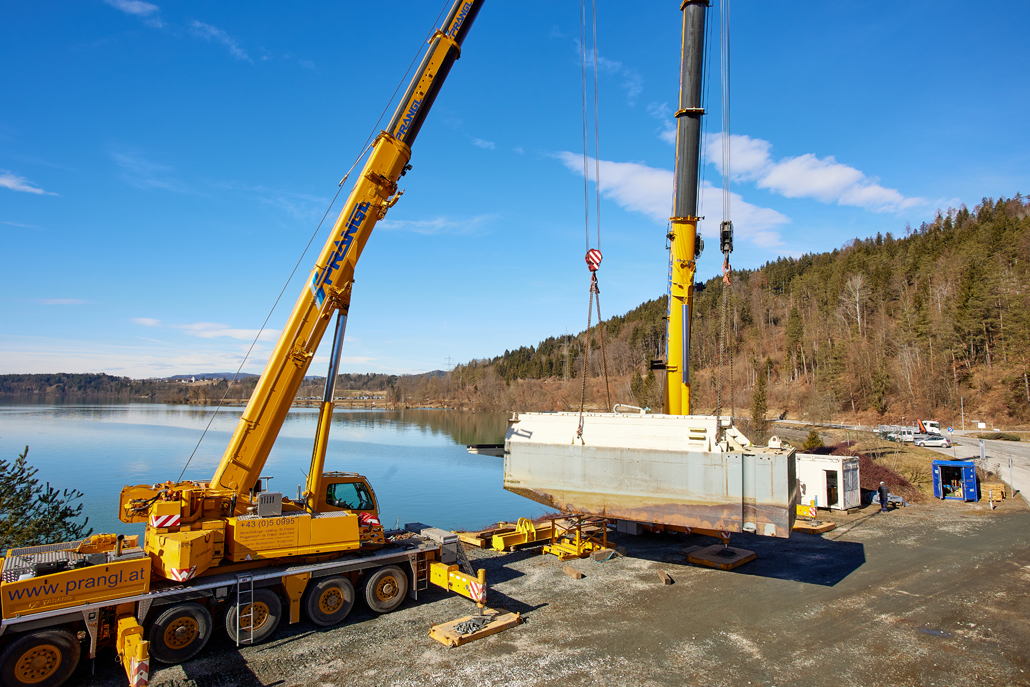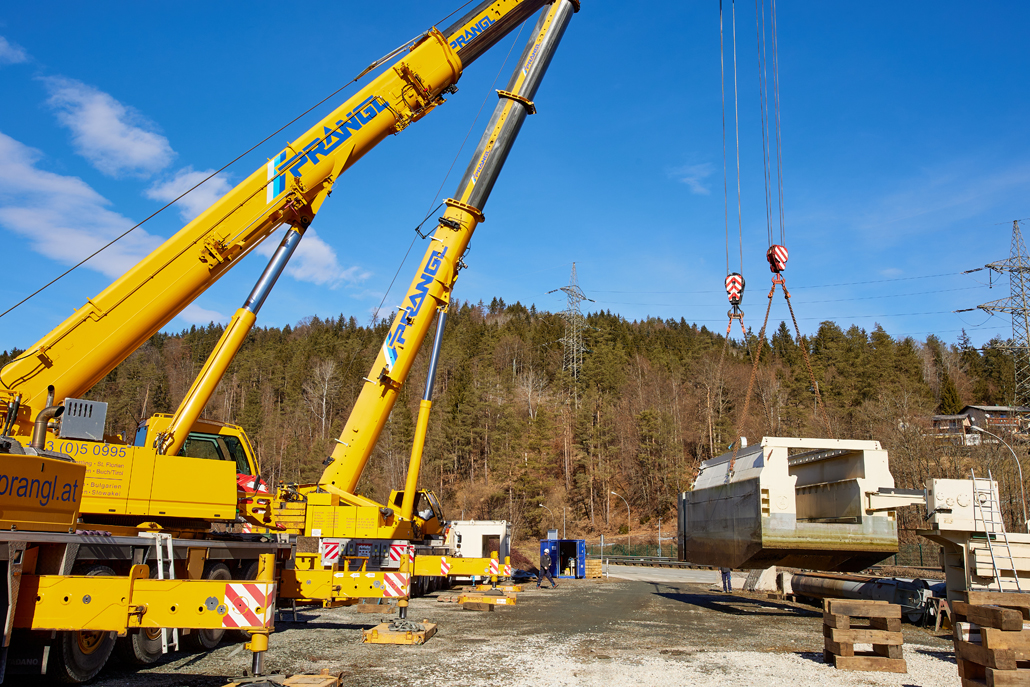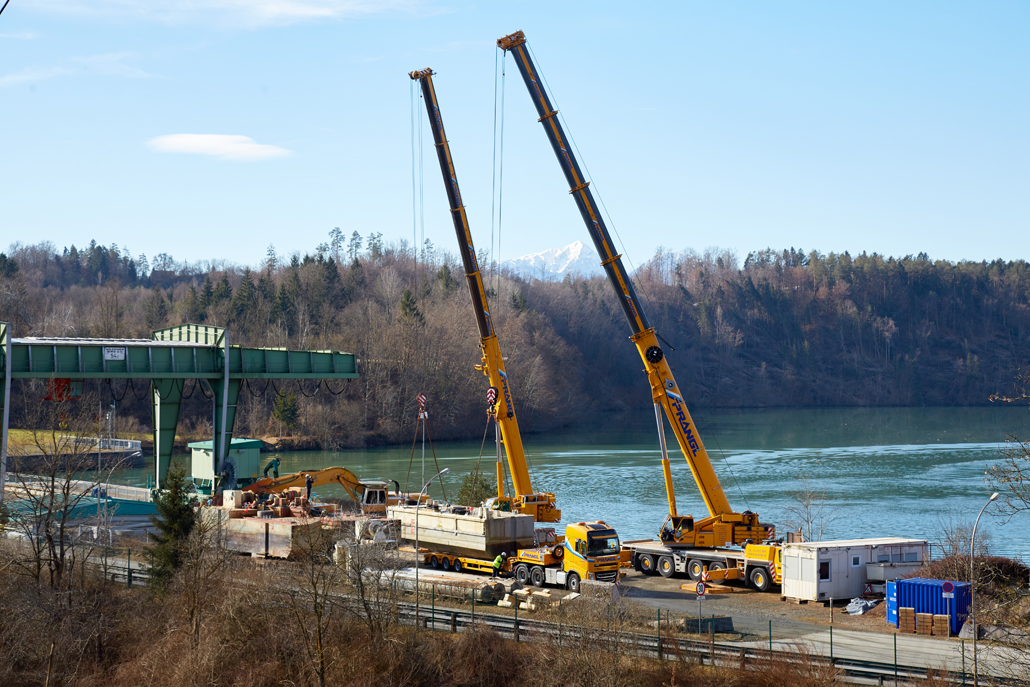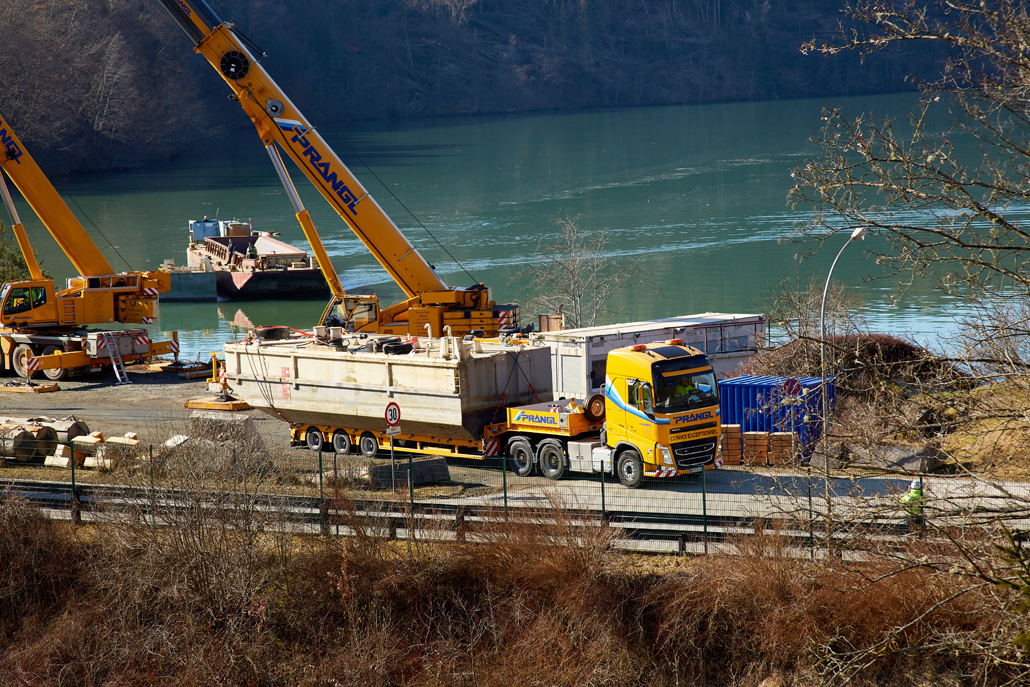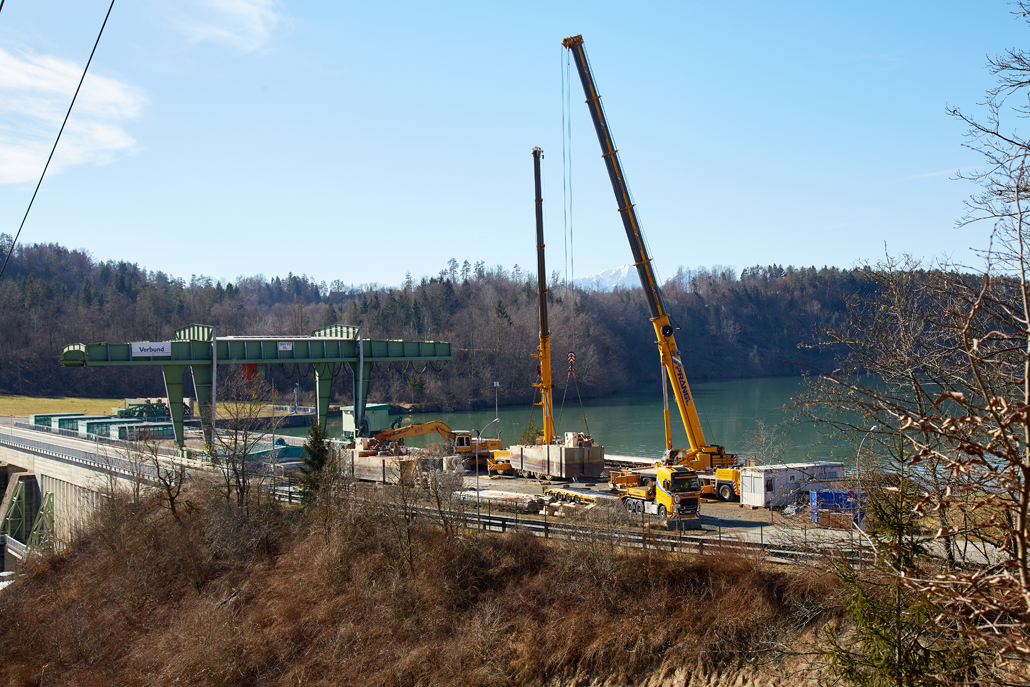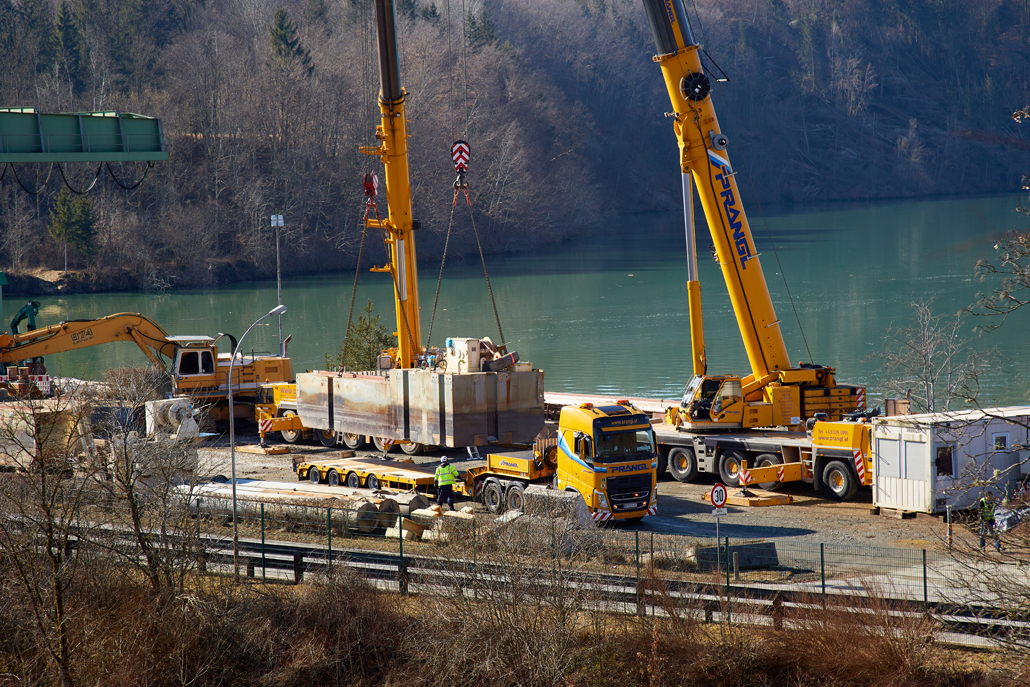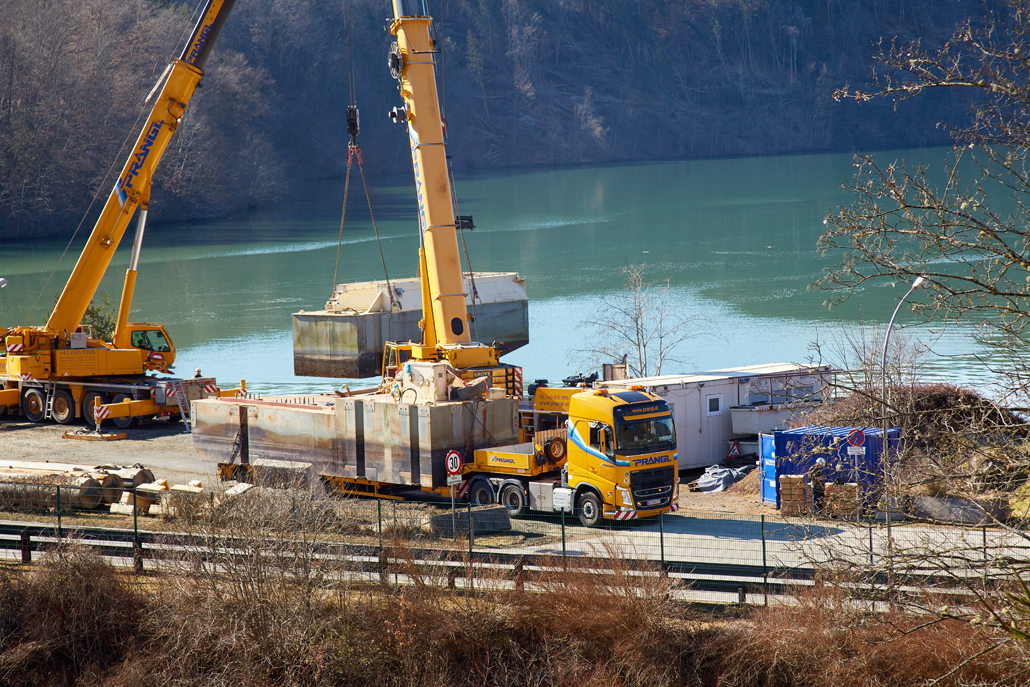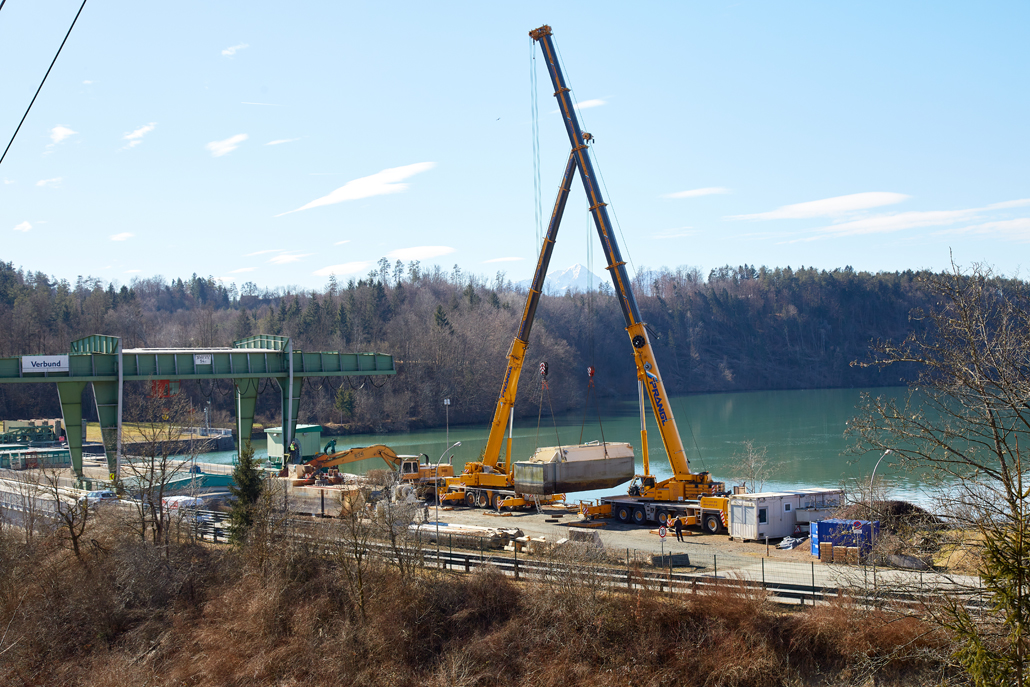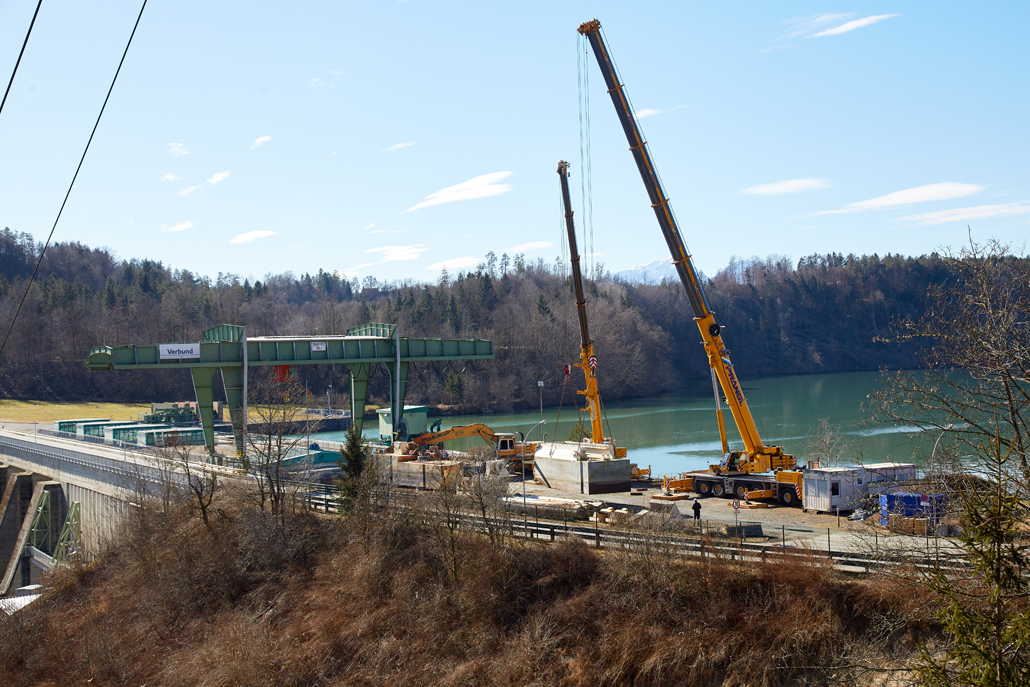Out of the water …
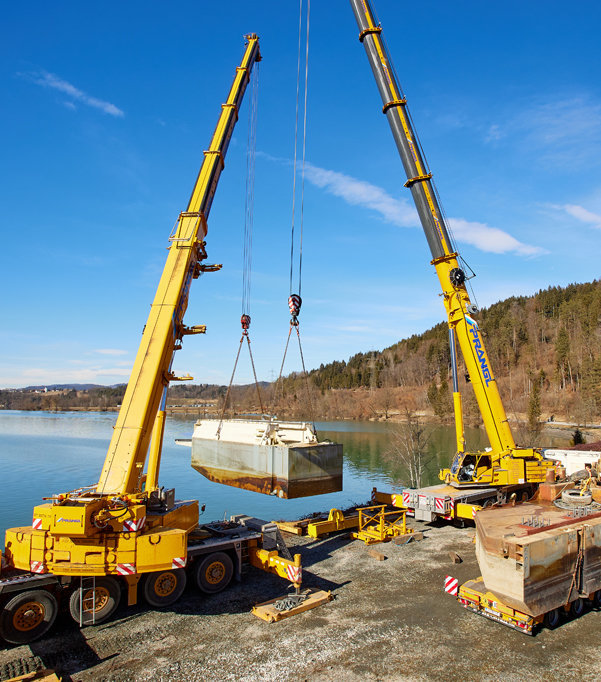
The challenge
The lifting and transporting of ship components
The extensive order was to transport a total of three barges and a dredging boat from the Drau in Carinthia to Tyrol, more precisely to Kufstein an den Inn. It was also a completely new undertaking for the client, which is why the work process had to be planned with particular precision. One of the two loading points was Edling in Carinthia.
Our solution
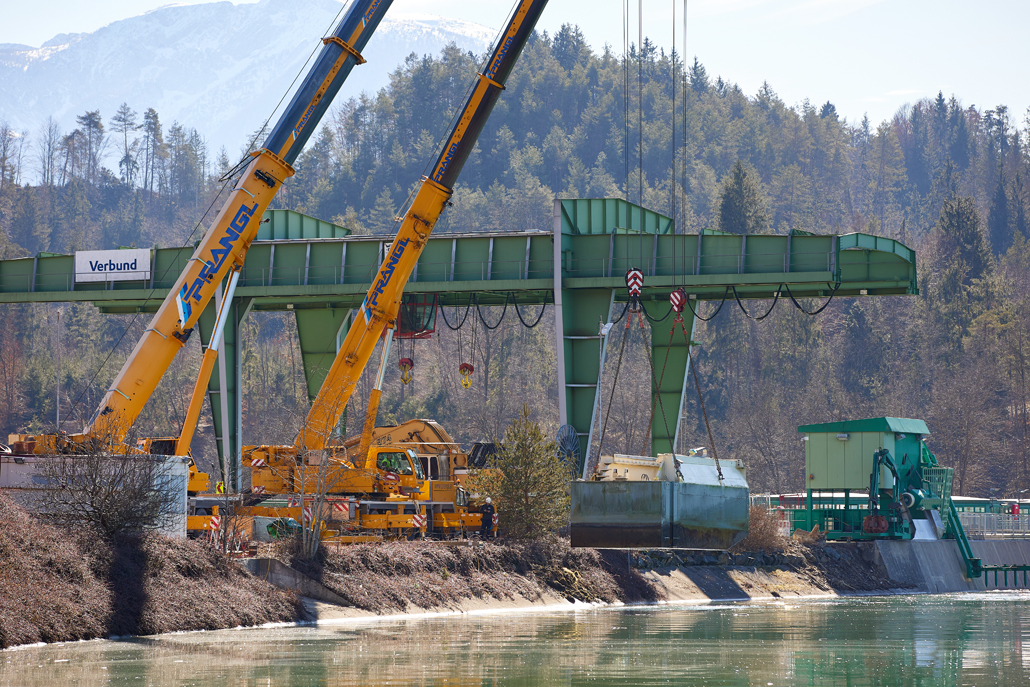
Unloading and temporary storage
Over the next four years, the ships will be tasked with dredging around 400,000 to 500,000 cubic meters of bed load material at the Oberaudorf-Ebbs am Inn power station near Kufstein. For transportation to Tyrol, the barges had to be dismantled into four parts, each with a weight of 40 metric tons and a length of 22 metres, and then loaded onto heavy-duty transporters. Then the time had finally arrived in Edling: Two telescopic cranes of 130 metric tons and 220 metric tons respectively, were positioned at a suitable location on the Völkermarkt reservoir. The barge components arrived by freighter.
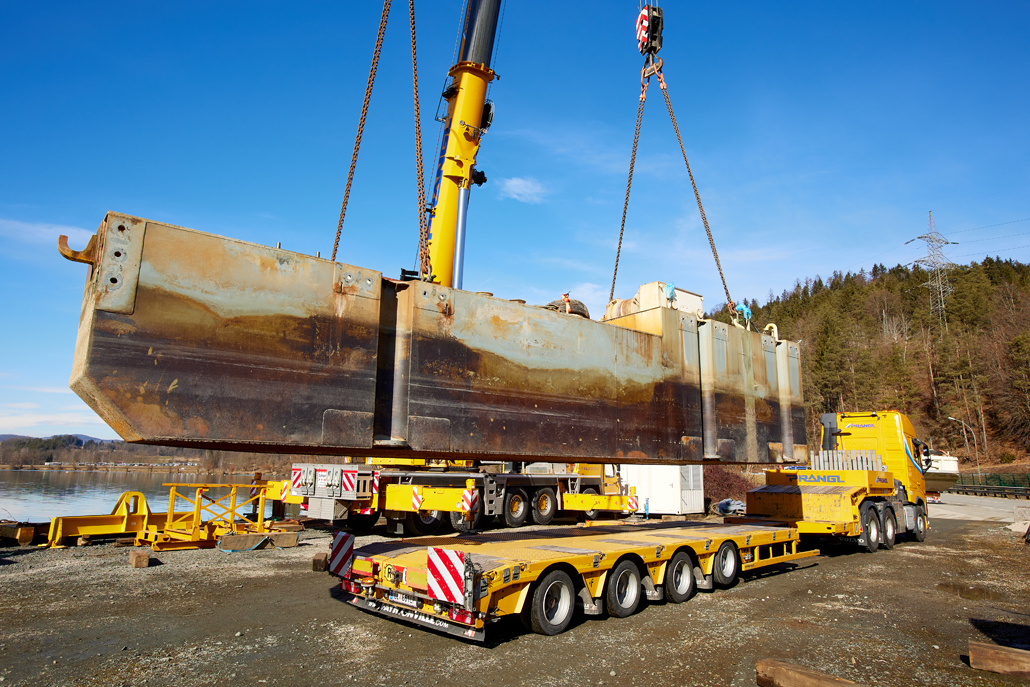
Precision tandem lifting
The two precisely aligned cranes took on the load together and carefully lifted it in tandem to the prepared unloading area. Little by little all the parts were transferred and put down. Some of them had to be temporarily stored and then suspended again so they could be set down in the correct orientation. This meant that the available space at the unloading location had to be optimally managed. Especially when the heavy-duty transporters were loaded with the ship parts. To do this, load after load was lifted in tandem and the transporter positioned directly underneath.
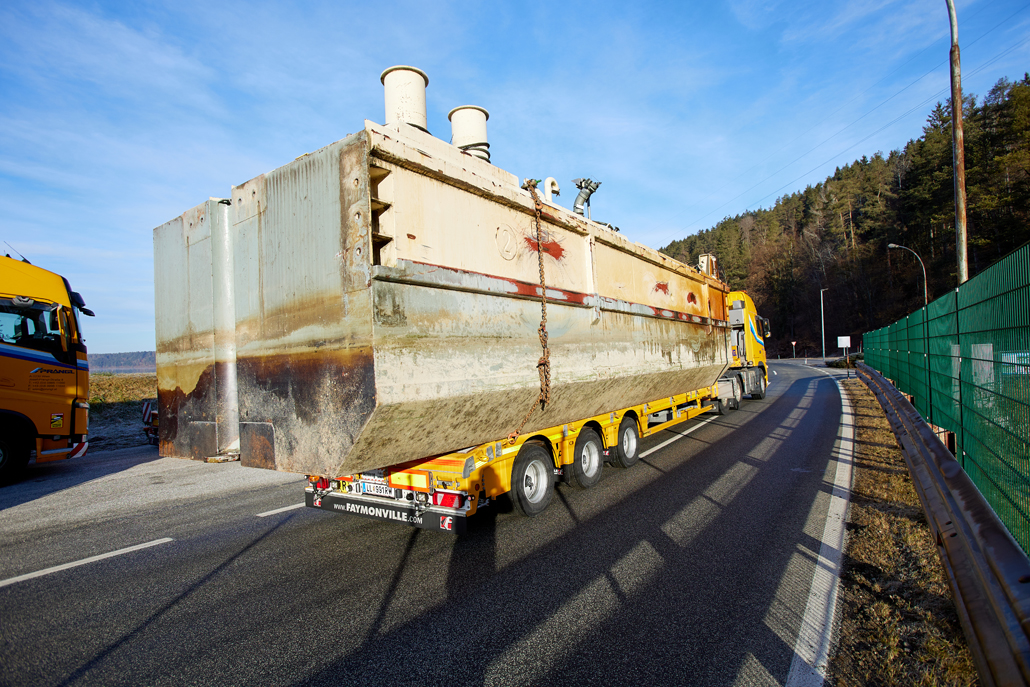
Heavy-duty transport with detours
After the mobile cranes slowly set down the parts, they were secured and prepared for transport. The route to Tyrol was of course carefully checked in advance and long detours had to be taken through Bavaria. Like those from St. Jakob im Rosental, the ship parts from Edling landed safely in Tyrol. The ship parts were expected at the unloading location in Kufstein – which was only established and tested for suitability in advance after consultation with the Prangl team – and unloaded by two telescopic cranes of 250 metric tons and 160 metric tons respectively.

